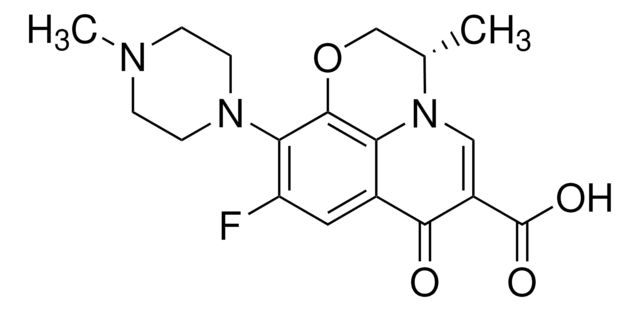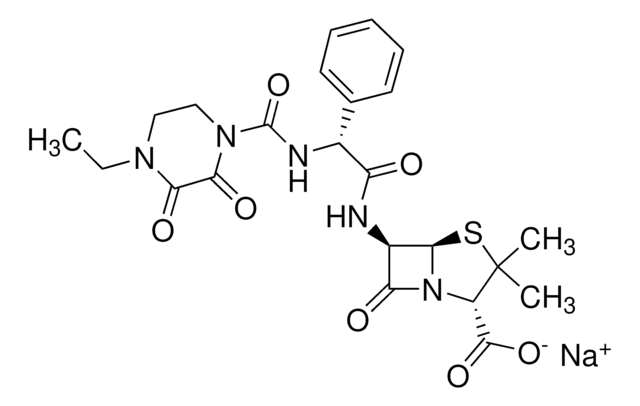17850
Ciprofloxacin
≥98% (HPLC)
Sinónimos:
1-Cyclopropyl-6-fluoro-4-oxo-7-(piperazin-1-yl)-1,4-dihydroquinoline-3-carboxylic acid, Ciprobay
About This Item
Productos recomendados
Agency
EPA 1694
Nivel de calidad
Análisis
≥98% (HPLC)
formulario
powder or crystals
espectro de actividad antibiótica
Gram-negative bacteria
Gram-positive bacteria
aplicaciones
environmental
Modo de acción
DNA synthesis | interferes
enzyme | inhibits
cadena SMILES
OC(=O)C1=CN(C2CC2)c3cc(N4CCNCC4)c(F)cc3C1=O
InChI
1S/C17H18FN3O3/c18-13-7-11-14(8-15(13)20-5-3-19-4-6-20)21(10-1-2-10)9-12(16(11)22)17(23)24/h7-10,19H,1-6H2,(H,23,24)
Clave InChI
MYSWGUAQZAJSOK-UHFFFAOYSA-N
Información sobre el gen
human ... CYP1A2(1544) , KCNH1(3756)
rat ... Gabra1(29705)
¿Está buscando productos similares? Visita Guía de comparación de productos
Descripción general
Chemical structure: fluoroquinolone
Aplicación
Acciones bioquímicas o fisiológicas
Código de clase de almacenamiento
11 - Combustible Solids
Clase de riesgo para el agua (WGK)
WGK 2
Equipo de protección personal
Eyeshields, Gloves, type N95 (US)
Elija entre una de las versiones más recientes:
¿Ya tiene este producto?
Encuentre la documentación para los productos que ha comprado recientemente en la Biblioteca de documentos.
Los clientes también vieron
Nuestro equipo de científicos tiene experiencia en todas las áreas de investigación: Ciencias de la vida, Ciencia de los materiales, Síntesis química, Cromatografía, Analítica y muchas otras.
Póngase en contacto con el Servicio técnico







